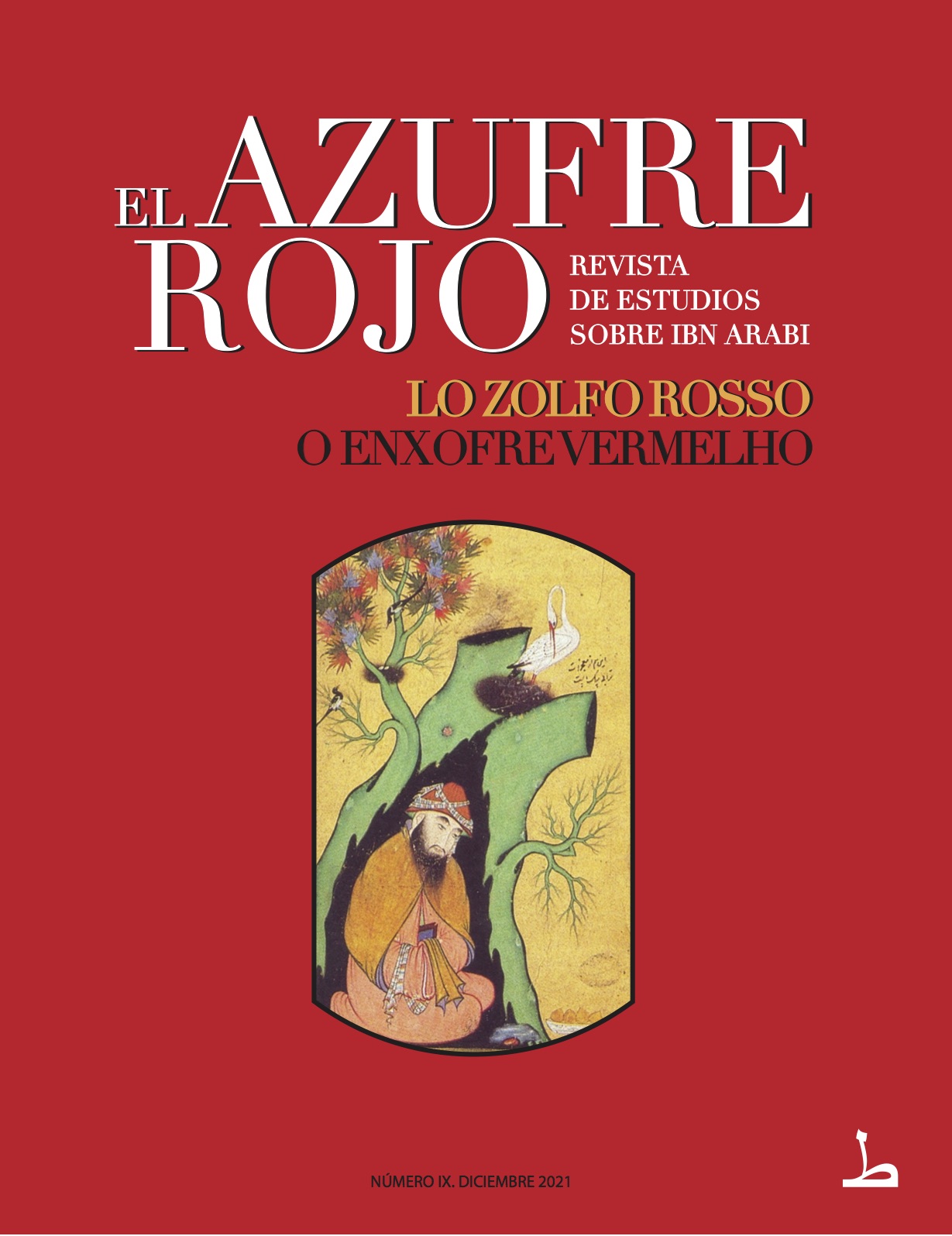MÉTODOS DE REALIZACIÓN ESPIRITUAL EN EL SUFISMO
Resumen
Resumen: A diferencia de otras formas de conocimiento que conforman las disciplinas del saber de la tradición islámica, el sufismo no se limita a la especulación teórica, sino que comprende una serie de métodos rigurosos de realización interior, en tanto que vía iniciática. El más conocido de estos métodos es el ḏikr, la repetición o invocación de los Nombres Divinos, práctica que puede ir acompañada de una diversidad de ejercicios contemplativos, que pueden incluir el control de la respiración, posturas corporales y la meditación por medio de visualizaciones. El objetivo de este artículo es explorar con cierto grado de minuciosidad los aspectos más relevantes de estas prácticas, y muy particularmente la noción de murāqaba o contemplación, considerada por algunas escuelas de sufismo como la forma más directa y eficaz de realizar el conocimiento de lo divino.
Abstract: In contrast to the array of intellectual disciplines within traditional Islam, the Sufi path of knowledge is not limited to mere theoretical speculation. Rather, it entails a series of rigorous methods of inner realisation as part of its iniciatic teachings. Among these, the most effective and known methods is ḏikr, the invocation or remembrance of the Divine Names, a method of spiritual realisation that often goes hand in hand with various meditative practices that include breath control, specific body postures and visualizations. This article aims at exploring, with a certain degree of detail, the most relevant aspects pertaining to these practices, and in particular the notion of murāqaba – or contemplation – deemed by some school of Sufism as the most direct and effective way to reach the Divine.
Descargas
-
Resumen1568
-
pdf2391
Citas
- Abhi-navagupta, Luce delle sacre scritture [tantrāloka], editado por R. Gnoli, Turìn, UTET, 1972.
- Burkhardt, T., Introdution aux doctrines ésotériques de l’Islam, Paris, Dervy Livres, 1969.
- Chodkiewicz, M., «Note complémentaire sur les rites d’initiation dans les turuq», en ‘Ayn al-Ḥayât, 5 (1999), pp. 45-64.
- Coomaraswamy, A. K., Spiritual Authority and Temporal Power in the Indian Theory of Government, New Haven, American Oriental Society, 1942.
- Corbin, H., «Rûzbehân Baqlî Shîrâzî (522/1128-606/1209) et le Soufisme del Fidèles d’Amour», en En Islam iranien, Paris, Gallimard, 1972, vol. III.
- Dārā Šikōh, Muḥammad, La congiunzione dei due oceani, editado por S. D’Onofrio y F. Spe-ziale, Adelphi, Milano 2011.
- Dasgupta, S. B., An Introduction to Tāntrik Buddhism, Calcutta, University of Calcutta, 1950.
- Eliade, M., Lo Yoga. Immortalità e Libertà, Firenze, Sansoni, 1982.
- Ernst, C. W., Sufism. An Introduction to the Mystical Tradition of Islam, Boston-London, Shambala, 2011.
- Al-Ghazâlî, Il concerto mistico e l’estasi, editado por A. Iacovella, Turín, Il Leone Verde, 1999.
- Guénon, R., Aperçus sur l’Initiation, París, Éditions Traditionnelles, 1946.
----, Initiation et Réalisation spirituelle, Paris, Éditions Traditionnelles, 1973
- Kugle (ed.), S., Sufi Meditation and Contemplation. Timeless Wisdom from Mughal India, Omega Publications-Suluk Press, New Lebanon 2012.
- Landolt, H., Estudio preliminar en N. Isfarâyinî, Le Révélateur des Mystéres, Lagrasse, Verdier, 1986.
- Macchioro, V., Zagreus. Studi intorno all’Orfismo, Bari, Laterza, 1920.
- Martini, G. M., ‘Alā’ al-Dawla al-Simnānī between Spiritual Authority and Political Power. A Persian Lord and Intellectual in the Heart of the Ilkhanate, Leiden-Boston, Brill, 2017.
- Molé, M., «La Danse extatique en Islam», en Les Danses sacrées (Sources Orientales VI), Paris, Seu-il, 1963.
- Najm al-dīn Kubrā, Gli schiudimenti della bellezza e i profumi della maestà. Fawātiḥ al-jamāl wa fawā’iḥ al-jalāl, editado por N. Norozi, Mimesis, Milano-U-dine 2011.
- Pregadio, P., The Way of the Golden Elixir. An Introduction to Taoist Alchemy, Mountain View, Golden Elixir Press, 2014.
- Šāh Walī Allāh, Hama‘āt, Hyderabad, Akādimiya al-Šāh Walī Allāh al-Dihlawī, 1964.
- Silburn, L., La kuṇḍalinī o L’energia del profondo, Milano, Adelphi, 1997.
- Urizzi, P., Introducción a Kalābāḏī, Il Sufismo nelle parole degli antichi, Palermo, Officina di Studi Medievali, 2002.
- Valiuddin, M., Contemplative Discipline in Sufism, London-The Hague, East-West Publications, 1980.
- Ventura, A., Sapienza sufi. Dottrine e simboli dell’esoterismo islamico, Roma, Edizioni Me-diterranee, 2016.
-----, Lo Yoga dell’Islam, Roma, Edizioni Mediterranee, 2019.
- Waley, M. I., «Contemplative Disciplines in Early Persian Sufism», en L. Lewisohn (ed.), Classical Persian Sufism from its Origins to Rumi (700-1300), vol. I, Oxford, Oneworld Publications, 1999.
- Woodroffe, J., Śakti and Śakta, Essays and Addresses, Madras, Ganesh & Co., 1959.
-----, The Serpent Power, Madras, Ganesh & Co., 1950.
-----, The Garland of Letters. Studies in the Mantra-Śāstra, Madras, Ganesh & Co., 1974.


